- Home
- Ramachandra Guha
Gandhi Before India Page 8
Gandhi Before India Read online
Page 8
A month after Gandhi’s return, his brother Laxmidas was drawn into a controversy in their home town, Porbandar. Laxmidas had attached himself to the heir to the throne, Kumar Bhavsinghji. The Kumar was the son of the prince who, in the year of Gandhi’s birth (1869), had ‘expired in extreme agony’, causing Rana Vikmatji to have the prince’s adviser murdered and consequently have his own status reduced to that of a Third Class ruler, and then sent into exile. The Rana’s powers had not been fully restored by 1891. He had been allowed back into Porbandar, but he ruled under the supervision of an Administrator appointed by the British. The Rana’s grandson, Bhavsinghji, was being groomed for the throne. A British tutor taught him English, History and other subjects; a British engineer took him for excursions into the countryside, identifying sites for bridges to be built; the Administrator had him in his office two or three times a week, so that he could learn to settle disputes amongst his subjects and lay down state policy himself.
Gandhi writes in his autobiography that ‘my brother [Laxmidas] had been secretary and adviser to the late Ranasaheb of Porbandar before he was installed on his gaddi [throne] and hanging over his head at this time was the charge of having given wrong advice in that office.’9 Behind that sentence lies a rather complicated story, which had lost its significance in the 1920s – when Gandhi wrote his memoirs – but which may in fact have had a determining impact on his life and career.
Fortunately, a large file of correspondence in the archives allows us to flesh out the tale. We know therefore that in August 1891 Laxmidas was on the staff of the Thakor of Shapur, a zamindar in Kathiawar. However, he was often in Porbandar, where (as the Administrator of the State remarked) he ‘has been hanging about in some unknown and undefined capacity with Bhavsinghji for the last nine or ten months’.10 By hanging about the young prince, Laxmidas Gandhi may have hoped that when Bhavsinghji became the Rana of Porbandar, he would get a suitable position in his administration. Or perhaps he hoped to exercise influence indirectly, through his brother Mohandas, who, as a London-trained lawyer, was extremely well qualified to be diwan of Porbandar at a time when the British were modernizing indigenous systems of law and authority. In his memoirs, Gandhi writes that ‘my elder brother had built high hopes on me. The desire for wealth and name and fame was great in him.’11 This description allows for either possibility – that Laxmidas hoped he would become diwan of Porbandar, or (which seems more likely) that his better-qualified younger brother would get the job instead.
Laxmidas Gandhi’s patron, young Kumar Bhavsinghji, enjoyed the pleasures of the flesh more than the obligations of kingship. Although married he maintained a harem. At the time of Gandhi’s return from England, the Kumar had just acquired a new mistress. To indulge her he employed new servants, to add to a household staff already in excess of fifty persons. The expenses mounted, and so also the debts. The Administrator wrote despairingly that ‘the young Kumar has surrounded himself by some of the worst characters in the state.’12
The Kumar and his grandfather had a contentious relationship, the young man choosing to stay in a house away from the palace. On the night of 7/8 August 1891, Bhavsinghji broke into a room on the third floor of the palace. A blacksmith from the town had, at his command, opened the lock to the door as well as the locks to several boxes of jewels that the room contained.
From these boxes, Bhavsinghji helped himself to earrings, nose-rings and bracelets made of gold, rubies and other precious jewels. He also took some expensive dinner services back to his house. However, the blacksmith was stopped and questioned by the palace guards. When he explained why, and under whose instructions, he had intruded into the palace, the Rana alerted the Administrator of the State.
Porbandar’s Administrator, a man named S. P. Pundit, now called in Bhavsinghji, who insisted that the jewels belonged to his late parents. Worried that his grandfather would illegally dispose of them, he was pre-emptively claiming his birthright. Rana Vikmatji denied this – he told the Administrator that the jewels were the patrimony of the State, accumulated by several generations of rulers. So long as he was Rana he was in charge of them; when Bhavsinghji ascended the throne, but only then, would the responsibility pass on to him.13
That night at the palace, Bhavsinghji and the blacksmith had two other companions. One was the son of a Rajkot merchant to whom the Kumar owed money. The other was Gandhi’s ambitious brother Laxmidas. In his testimony to the Administrator, Laxmidas denied he was present at the break-in, claiming he was called in after the blacksmith was detained by the guards. Bhavsinghji, he said, was ‘very much perplexed’ at being called in to explain the theft. He asked Laxmidas whether he should call in a lawyer from Rajkot to help him. Laxmidas answered that since these were his jewels, that would be an admission of guilt. The prince said, ‘All right,’ whereupon Gandhi’s brother left. Seeking to distance himself from the controversy, Laxmidas told the administrator that he was in the palace ‘for five minutes only’ before returning home.14
The British Political Agent in Rajkot was called in to settle the dispute. The jewels were returned to the treasury, and Kumar Bhavsinghji warned that unless his conduct dramatically improved, he would not be allowed to become Rana when his grandfather passed on. Laxmidas Gandhi was told he could not visit Porbandar without the express permission of the Political Agent in Rajkot.15
Barred from his home town, and in disgrace with the authorities, Laxmidas turned to his brother Mohandas for help. Gandhi had briefly met the Political Agent in London. Could he not talk to the man and restore Laxmidas to favour?
Gandhi was hesitant, as he saw it, to ‘try to take advantage of a trifling acquaintance in England’. His brother persisted. ‘You do not know Kathiawar,’ he said, ‘and you have yet to know the world. Only influence counts here. It is not proper for you, a brother, to shirk your duty, when you can clearly put in a good word about me to an officer you know.’
Laxmidas was an elder brother; besides, he had come to Mohandas’s rescue when he needed money to study law in London. Against his better judgement, Gandhi went to meet the Political Agent. But racial boundaries were far more sharply drawn in British India: in the colony, a casual friendship between an Englishman and an Indian in the metropolis counted for nothing. When Mohandas went to plead his brother’s case, the Agent had him thrown out of the office.16
By his actions, Laxmidas Gandhi had ruined any chance Mohandas had of early preferment in Porbandar. After the fiasco in the palace the chances of a judgeship or diwanship had receded, if not altogether disappeared.17 The best option now was for Mohandas to work as a lawyer in British India. In early November 1891 he returned to Bombay, with a view to enrolling in the High Court. He was granted a licence on the basis of a certificate from the Inner Temple and a letter of recommendation from a British barrister.18
Bombay in the 1890s had a population of just under 1 million. A British resident called it ‘All India in Miniature’: anyone walking through its streets could hear forty languages being spoken, while their nostrils were assailed with the ‘blending of incenses and spices and garlic, and sugar and goats and dung’.19 Once a cluster of fishing villages, by the late nineteenth century Bombay was a thriving industrial and commercial centre. There were some fifty cotton mills, employing more than 50,000 people. There was a buzz of economic activity: land reclaimed from the sea, new railway lines laid to link the suburbs to the city, new docks constructed to cope with the increase in shipping. Schools and colleges were being opened all the time. The city was home to all the religions of India (and the world). It was also very diverse in class terms, with a large proletariat, a substantial business community, and a small but growing class of English-speaking lawyers, doctors, clerks and teachers.20 As the city expanded, wrote one historian, ‘all tribes in Western India seemed to have flocked to Bombay, like the Adriatic tribes who took refuge in the city of the Lagoons.’21 Gandhi’s fellow Gujaratis were a key part of this migration, moving down the coast to take advantage o
f the new opportunities in trade and the professions.
On reaching Bombay, Gandhi rented a set of rooms in Girgaum, not far from the house where he had first met the Jain savant Raychandbhai. The High Court lay some three miles to the south, in the Fort area. One of a series of impressive neo-Gothic buildings, the Court was famed for its gabled roofs, its turrets and its size. The interior area was a colossal 80,000 square feet.22
Every morning the young London-trained lawyer walked to the High Court, climbed its long, curving staircase, and went in and out of its rooms. As he recalled, with disarming frankness, ‘often I could not follow the cases and dozed off’. The study of Indian law was ‘a tedious business’; he found it especially hard to come to grips with the Civil Procedure Code. No briefs came his way, perhaps because he was an indifferent speaker, as well as an outsider to the city. However, he did fight a case in the lower courts, and also made some money drafting a memorial for a farmer whose land had been confiscated.23
Mohandas Gandhi was in Bombay, off and on, from November 1891 to about September 1892. (His stay was interrupted by regular trips to Rajkot, which was an overnight journey by train.) Of his impressions of the city he left no record. Did he mix only with his fellow Modh Banias, or did he sample the emerging cosmopolitan culture of Bombay more widely? There was a very active Parsi and Gujarati theatre – did he go to any of its shows? On his way to the High Court he would have seen cricket being played on the Bombay maidans – did he ever stop to watch a game?
Only one letter from Gandhi’s time in Bombay has survived. Written to a friend, it complains of the lack of work, and also of the fact that ‘the caste opposition is as great as ever’. A section of the Modh Banias was holding out, still cross with Gandhi for crossing the kala pani to educate himself in London. ‘Everything depends’, said Mohandas,
upon one man who will try his best never to allow me to enter the caste. I am not so very sorry for myself as I am for the caste fellows who follow the authority of one man like sheep. They have been passing some meaningless resolutions and betraying their malice clearly in overdoing their part. Religion, of course, finds no place in their arguments. Is it not almost better not to have anything to do with such fellows than to fawn upon them and wheedle their fame so that I might be considered one of them?24
Unsuccessful in court, still spurned by his caste, Gandhi found succour in conversations with his new friend Raychandbhai. He visited him in his shop, where he was impressed with the ease with which the poet sat cross-legged on a cushion – so different from the Western way of sitting on a chair or sofa that Gandhi was himself now accustomed to. He was also struck by how indifferent Raychand was to his appearance. The men he met in court paid great attention to every aspect of their dress, yet this jeweller-thinker wore a simple dhoti and kurta, more often than not unironed. Once, their conversation turned to the subject of compassion towards other beings. Raychand said that while one could not do without leather, one must use it sparingly. Gandhi noticed a leather strip holding up the jeweller’s cap. When this was pointed out, Raychand took the piece off. The gesture impressed the disciple – here was a teacher, he thought, open to correction and even refutation.
Raychand told Gandhi that he must look beyond the conventions of his caste. Banias were ‘ever punctilious’ in small matters, such as not harming insects and not eating certain foods. Yet their compassion was circumscribed. And they were totally lacking in courage. Although the Bania’s sphere was business, said Raychand, he must also ‘possess the qualities of other castes’, learning hard work from the Sudra, fearlessness from the Kshatriya, a love of learning from the Brahmin.25
Failing to find regular work in Bombay, Gandhi returned home to Rajkot. He couldn’t, it seems, yet argue in court, but as a well-published writer (in the journal of the Vegetarian Society of London) he had the skill to draft memorials. Gandhi set up an office in Rajkot, which began to attract a steady stream of clients. He drafted petitions on their behalf, chiefly to do with land disputes. This brought him an income of Rs 300 a month, adequate to maintain his family, which had now been augmented by the arrival of a second son, who was born on 28 October 1892 and named Manilal.26
To do freelance work in a small town rather than (as his London training had led him to expect) build a practice in the great city of Bombay was galling. That, for the first time in his life, he did not have to depend on loans from friends or family was small consolation. Fortunately, as the doors were closing in Kathiawar, an opportunity beckoned in South Africa. A family of Muslim traders from the Gandhis’ home town of Porbandar had established a successful business there. Known as Dada Abdulla and Sons, they had branches in Natal, the Transvaal and Portuguese East Africa, trading in a wide range of commodities. The firm’s seven shops in the Transvaal were managed by Dada Abdulla’s cousin Tayob Haji Khan Mahomed. In July 1890, Tayob’s family had purchased these shops for the sum of £42,500, payable in instalments. Early in 1892, the instalments stopped coming. Abdulla was now suing his cousin for the money still owed him, with interest added on. The sum asked for was about £24,700.27
British lawyers were appearing for Dada Abdulla in court, but there was a problem – the mechant’s own records were in Gujarati. Abdulla was in need of a lawyer who knew both his language and the language of the courts, and wrote to Laxmidas Gandhi asking whether his brother, the London-trained barrister, was prepared to come out and assist him. The firm would provide first-class return fare by boat, board and lodgings, and pay a fee of £105 besides.
Laxmidas discussed the proposal with Mohandas, to whom it greatly appealed. He ‘wanted somehow to leave India’, and here was ‘a tempting opportunity of seeing a new country, and of having new experience’.28 This statement, from Gandhi’s autobiography, may be rephrased in less euphemistic terms. The invitation from South Africa allowed him an escape from the political intrigues at home, and to earn a decent sum of money.
Dada Abdulla’s invitation to Mohandas Gandhi was possible, and feasible, only in the late nineteenth century. A Gujarati trader had followed the British Flag into South Africa, where there were modern courts run on modern lines. At the same time, another Gujarati had followed the Flag to its source, qualifying as a barrister in London. In the 1790s there would have been no Indian traders in South Africa; in the 1990s these traders would have been assimilated English-speakers. In the 1890s, however, the twin processes of globalization and imperialism brought together a Hindu lawyer from Porbandar and a Muslim merchant from the same town to work together in South Africa. Leaving his wife and family for the second time in less than five years, Mohandas Gandhi sailed from Bombay for Durban on 24 April 1893.
The first Indians had sailed for Natal thirty-three years before Gandhi did. They were a group of indentured labourers brought in to work on the sugar plantations. When, on 16 November 1860, the SS Truro reached Durban, a reporter from the Natal Mercury was at hand to record its arrival. The passengers who came ashore were
a queer comical, foreign-looking, very Oriental-like crowd. The men with their huge muslim turbans, bare scraggy shin bones, and coloured garments; the women with their flashing eyes, long dishevelled pitchy hair, with their half-covered, well formed figures, and their keen, inquisitive glances; the children with their meagre, intelligent, cute and humorous countenance mounted on bodies of unconscionable fragility, were all evidently … of a different race and kind to any we have yet seen either in Africa or England.29
The colony of Natal, on the south-east coast of Africa, was controlled by people of British descent. In the 1840s they had established dominance over the Boers; people of Dutch origin who then retreated to the interior. The climate and soil of Natal were ideal for growing sugar; the problem, however, was that Africans were unwilling to spare time from their fields to work as labourers. A public meeting of whites in October 1851 concluded that ‘it is impossible to rely upon the kafir population of this Colony for a permanent effective supply of labour’. So, from the late 1850
s, the Natal Government sought to import labour from India. Recruiting agents were sent to the ports of Bombay, Calcutta and Madras; they, in turn, hired sub-agents to scour the countryside. The men picked up were ferried to the ports and put on ships sailing for Durban.
The coolies who came to Natal were indentured for five years. They could re-indenture for a further five years, and then claim a return voyage home or stay on in Natal as (nominally) free men. On the plantation they were given housing, rations, a modest wage (ten shillings a month) and medical assistance. ‘Coolie immigration … is deemed more essential to our prosperity than ever. It is the vitalising principle,’ wrote the Natal Mercury in 1865. So it turned out: whereas the average annual production of sugar in the colony was less than 500 tons in the 1850s, in the 1870s it was close to 10,000 tons, and in the 1890s in excess of 20,000 tons. Sugar exports rose exponentially as a result of the import of Indian labour, increasing fifty-fold in the first decade of their introduction.
A large proportion of the migrants were Tamil and Telugu speakers from south India. Women labourers were also shipped from India, in the ratio of forty women to a hundred men. Brahmins and Muslims were discouraged, because they forbade their women from working outside the house. The recruits came mostly from the low or intermediate castes; at home, they had been agricultural labourers and small peasants. Others had worked as potters, barbers, carpenters and cobblers.

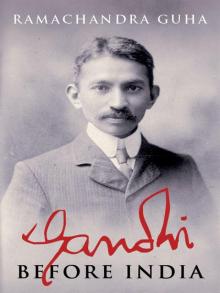 Gandhi Before India
Gandhi Before India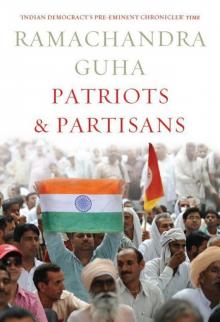 Patriots & Partisans
Patriots & Partisans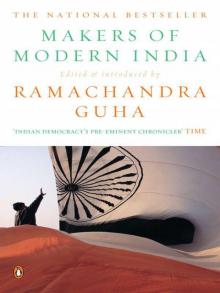 Makers of Modern India
Makers of Modern India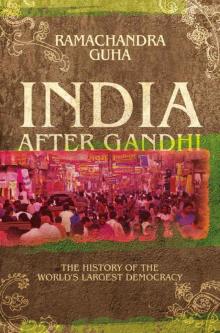 India After Gandhi: The History of the World's Largest Democracy
India After Gandhi: The History of the World's Largest Democracy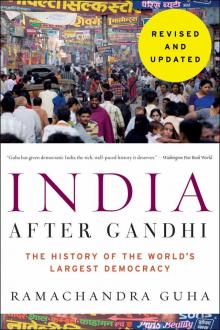 India After Gandhi Revised and Updated Edition
India After Gandhi Revised and Updated Edition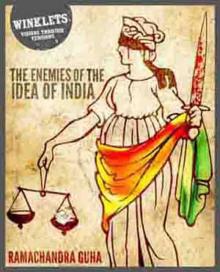 The Enemies of the Idea of India
The Enemies of the Idea of India Verdicts on Nehru
Verdicts on Nehru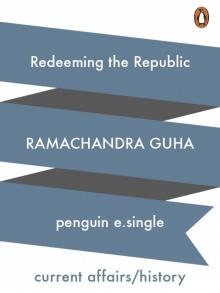 Redeeming the Republic
Redeeming the Republic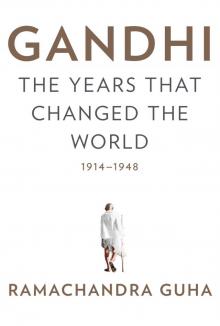 Gandhi
Gandhi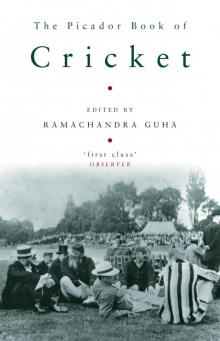 The Picador Book of Cricket
The Picador Book of Cricket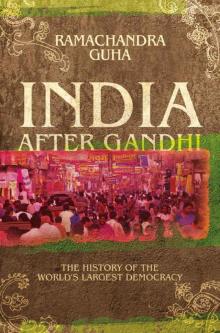 India After Gandhi
India After Gandhi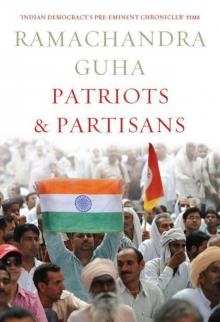 Patriots and Partisans: From Nehru to Hindutva and Beyond
Patriots and Partisans: From Nehru to Hindutva and Beyond